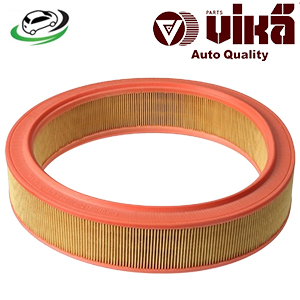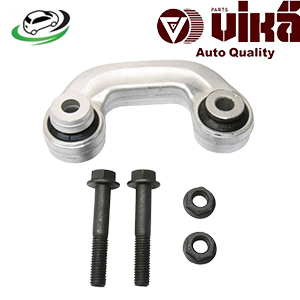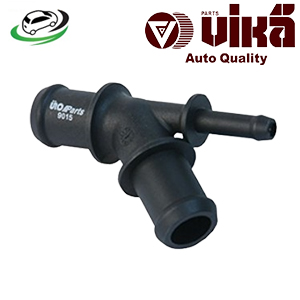Get Cooling Hose Connector Volkswagen Golf IV 2.0 All / Volkswagen New Beetle TDI All 1J0121087D
The cooling hose connector is a vital component in a vehicle’s cooling system, playing a key role in maintaining optimal engine temperature and preventing overheating. It connects various hoses in the cooling system, ensuring that coolant flows smoothly between the engine, radiator, and other components. This comprehensive guide will delve into what a cooling hose connector is, how it works, its benefits, common issues, and maintenance tips.
What is a Cooling Hose Connector?
A cooling hose connector is a fitting used to join two or more hoses within the vehicle’s cooling system. It is typically made of durable materials such as plastic, metal, or rubber, designed to withstand the high temperatures and pressures present in the cooling system. The connector ensures a secure and leak-proof connection between hoses, allowing coolant to flow efficiently throughout the system.
How Does a Cooling Hose Connector Work?
The cooling system in a vehicle is responsible for regulating engine temperature by circulating coolant through various components. The cooling hose connector serves several functions within this system:
- Fluid Transfer: The primary role of the cooling hose connector is to facilitate the transfer of coolant between different hoses and components. It ensures that the coolant flows from the engine to the radiator, heater core, and back to the engine without leaks or interruptions.
- Pressure Management: The connector helps maintain the proper pressure within the cooling system by providing a secure connection between hoses. This prevents pressure loss, which is crucial for the efficient operation of the cooling system.
- Temperature Tolerance: Cooling hose connectors are designed to withstand the high temperatures of the coolant and the engine environment. They are built to resist heat deformation and thermal expansion, ensuring long-term reliability.
- Leak Prevention: A well-designed connector provides a tight seal between hoses, preventing coolant leaks that could lead to overheating or engine damage.
Benefits of a Properly Functioning Cooling Hose Connector
A properly functioning cooling hose connector offers several key benefits for vehicle performance and reliability:
- Optimal Engine Temperature: By ensuring a secure connection between hoses, the connector helps maintain the proper flow of coolant, preventing engine overheating and ensuring optimal operating temperature.
- Leak Prevention: A reliable connector prevents coolant leaks, reducing the risk of engine damage and minimizing the need for frequent coolant top-ups.
- Improved Cooling Efficiency: Effective coolant transfer helps the cooling system operate more efficiently, improving overall engine performance and fuel economy.
- Enhanced Engine Longevity: By maintaining proper coolant flow and temperature, the connector contributes to engine health and longevity, reducing the risk of overheating and associated damage.
- Reduced Maintenance Costs: Preventing leaks and ensuring efficient coolant flow can help avoid costly repairs and reduce maintenance expenses over time.
Common Issues with Cooling Hose Connectors
Cooling hose connectors can experience several issues that may affect their performance and the overall cooling system. Common problems include:
- Cracking or Fracturing: Over time, connectors can develop cracks or fractures due to exposure to high temperatures, pressure fluctuations, and aging. This can lead to coolant leaks and reduced effectiveness.
- Loose Connections: Improper installation or wear and tear can cause connectors to become loose, leading to coolant leaks and potential overheating issues.
- Corrosion: Metal connectors, especially those exposed to coolant and environmental elements, can suffer from corrosion. Corrosion can weaken the connector and compromise its sealing ability.
- Deformation: Excessive heat or pressure can cause connectors to deform, affecting their ability to provide a secure and leak-proof connection.
- Clogging: Debris or sediment in the cooling system can clog the connector or obstruct coolant flow, leading to cooling inefficiencies and potential overheating.
Signs of a Failing Cooling Hose Connector
Identifying the signs of a failing cooling hose connector can help prevent more severe cooling system issues. Common symptoms include:
- Coolant Leaks: Visible leaks around the connector or pooling coolant underneath the vehicle can indicate a problem with the connector.
- Overheating Engine: If the engine temperature rises above normal or the temperature gauge shows higher readings, it could be due to a faulty connector affecting coolant flow.
- Low Coolant Levels: Frequent coolant loss or the need for constant top-ups may be a sign of a leak or failure in the cooling hose connector.
- Unusual Engine Sounds: Gurgling or hissing sounds from the engine area can indicate air or coolant escaping due to a connector issue.
- Steam or Smoke: Steam or smoke from the engine bay can be a sign of a coolant leak caused by a damaged connector.
Maintenance and Replacement
Proper maintenance and timely replacement of cooling hose connectors are essential for ensuring the efficient operation of the cooling system. Here are some maintenance tips:
- Regular Inspections: Periodically inspect cooling hose connectors for signs of damage, corrosion, or leaks. Check for any visible cracks, loose fittings, or deformations.
- Check for Leaks: Monitor coolant levels and inspect for any signs of leaks around the connectors. Address any leaks promptly to prevent further issues.
- Replace Worn Connectors: If a connector shows signs of wear, damage, or corrosion, replace it with a high-quality part that meets or exceeds the manufacturer’s specifications.
- Clean the System: Regularly flush the cooling system to remove debris and contaminants that can affect the performance of connectors and other components.
- Professional Inspection: If you suspect an issue with the cooling system or connectors, have a professional mechanic inspect the system for a thorough diagnosis and repair.
Replacement Procedure
Replacing a cooling hose connector typically involves the following steps:
- Preparation: Ensure the engine is cool and the vehicle is on a level surface. Gather the necessary tools and a replacement connector.
- Locate the Connector: Identify the location of the cooling hose connector. It is usually found connecting various hoses in the cooling system.
- Remove the Old Connector: Carefully detach any clamps or fittings securing the old connector. Remove the old connector and inspect the hoses for any damage or debris.
- Install the New Connector: Position the new connector in place and secure it with the appropriate clamps or fittings. Ensure that it is properly aligned and tightened to prevent leaks.
- Check for Leaks: Start the engine and check for any signs of leaks around the new connector. Monitor coolant levels and ensure that the engine operates at the normal temperature.
- Test Drive: Take the vehicle for a test drive to ensure that the cooling system is functioning correctly and that there are no issues with the new connector.
Follow us on Facebook for more parts.



